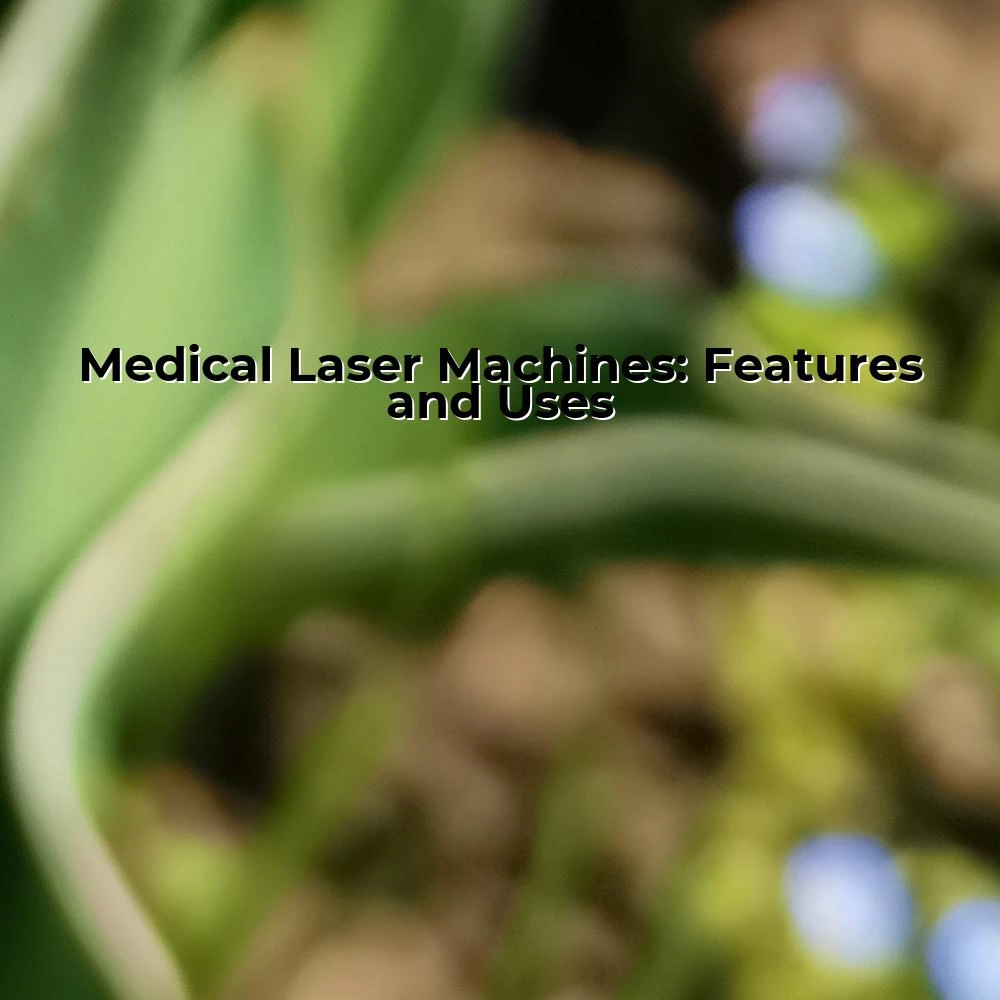Medical Laser Machines
| Visit:72

Medical Laser Machines
Medical laser machines have revolutionized modern healthcare, offering less invasive, precise, and effective treatments for a wide range of medical conditions. They are increasingly becoming an indispensable part of healthcare delivery, providing innovative solutions in fields as diverse as dermatology, ophthalmology, oncology, surgery, dentistry, and physiotherapy. This article seeks to explore the diverse functional attributes of these highly sophisticated devices and their utilization in medical practice.
Features of Medical Laser Machines:
The medical laser machine is a highly specialized device engineered with cutting-edge technology to generate highly focused light. Unlike normal light, this amplified light can be precisely directed onto very small areas. Two significant features of medical lasers distinguish them from other therapeutic modalities: monochromaticity and coherence. This ensures high precision in controlling the dose and focus of therapeutic irradiance.
Depending on the clinical requirements, a myriad of different medical lasers are available, using different mediums to produce laser light at varying wavelengths. For instance, medical lasers can be classified as gas lasers, solid-state lasers, dye lasers, and diode lasers.
Another significant feature of medical laser machines is their adaptability and bespoke application based on clinical needs. With advanced adjustment mechanisms, practitioners can easily modify factors like intensity, pulse rate, and wavelength to match the patient-specific requirements.
Uses of Medical Laser Machines:
Medical laser machines have found a significant place in various medical fields:
1. Surgery: These machines provide surgeons with an advanced tool for various surgical procedures like neurological, cardiovascular, and orthopedic surgeries. The laser beam's precise focus helps minimize damage to the surrounding tissues, thus reducing the risk of infection and accelerating post-operative recovery.
2. Dermatology: Laser machines are an integral part of cosmetic and medical dermatology, used for skin resurfacing, tattoo removal, hair removal, treating vascular and pigmented lesions, and much more.
3. Ophthalmology: Procedures like LASIK and cataract surgery can be performed using medical laser machines.
4. Dentistry: Uses range from dental surgery, root canal cleaning, gum reshaping, and even teeth whitening.
5. Physiotherapy: Low-level lasers or cold laser therapy is used for pain relief, acceleration of tissue repair, and improving mobility.
In conclusion, medical laser machines' benefits are not just patient-centric; they also empower healthcare providers with accuracy, portability, safety, ease of use, and optimized control of treatment parameters. As technology continues to surmount new frontiers, exciting enhancements in this field are foreseeable, driving advancements in medical diagnostics and therapeutics.
For more comprehensive knowledge and an extensive variety of medical laser machines, refer to https://www.ciellulu.net/, a site that provides detailed insight into the world of medical lasers. Healthcare providers can equip themselves with the latest industry developments, allowing them to make more informed decisions when incorporating laser technology into their practices.
Ensuring the safety and efficacy of medical laser machines' applications necessitates rigorous training, expertise, and understanding of laser physics, safety protocols, and the machines' specific handling and operation.
In this quest, articles like this and online resources at www.ciellulu.net can be valuable assets in a healthcare provider's repertoire. Let us continue to enrich our practices by harnessing the immense potential of medical laser machines.
Source: Medical Laser Machines




 Ciellulu Laser - Facial Machine Supplier
Ciellulu Laser - Facial Machine Supplier

